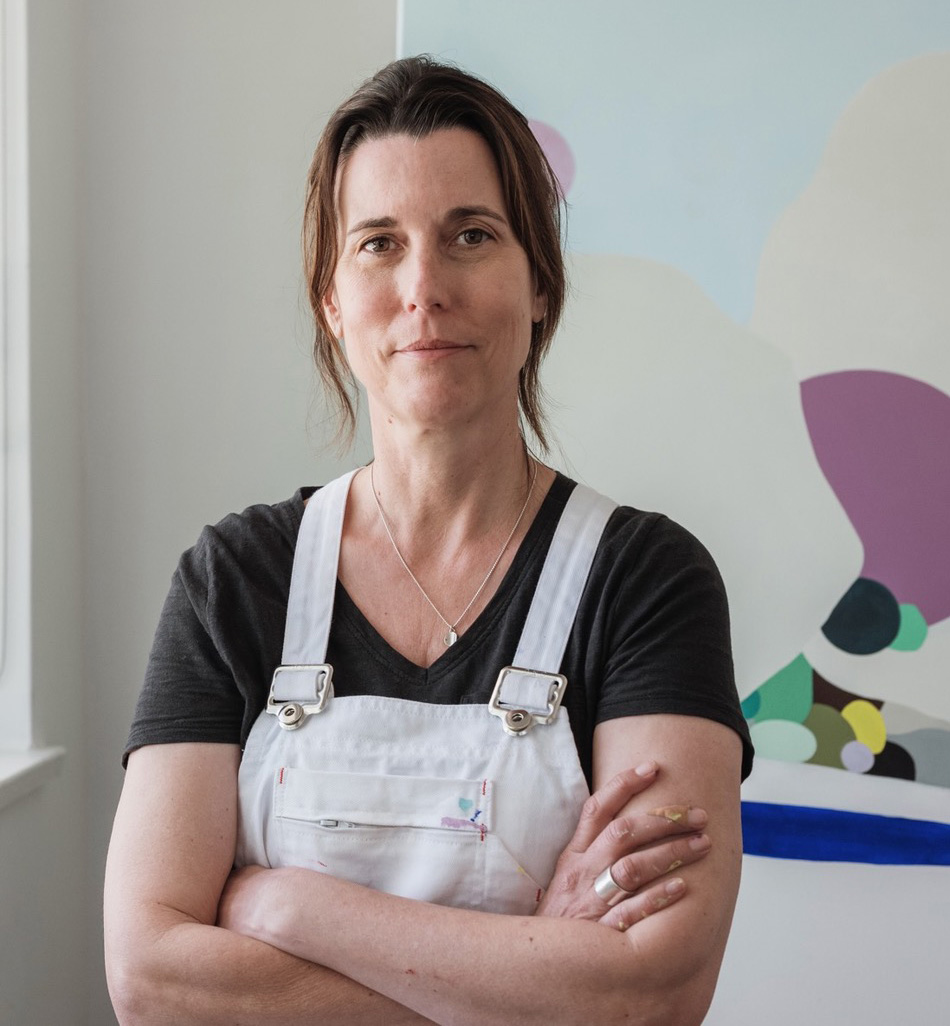
Image Credit: Flore Vallery – Radot
Clare Brodie’s paintings have a calming beauty with quiet strength.
Brodie fuses her emotional internal landscape with nature, deciphering complexities into deceptively simple compositions with a uniform finish that belies all effort and process.
As a colour block painter Brodie follows her credio – colour is precious by using high-intensity saturated colours within a neutral palette.
Working in conceptual series, Brodie explores and discovers a unique visual language for each series. Her work is continually evolving and reflecting her current state of being.
Sydney based, Brodie is represented by galleries in Australia, New Zealand and the United States. Her collectors extend to Asia and England. Brodie has been a multiple finalist in the Mosman, Raw and Waverley art prizes.
Gallery Representation
Gallerysmith – Melbourne
Pervious Gallery Representation
L&G Projects – California, USA
Scott Lawrie Gallery – New Zealand
Studio Gallery Group – Australia
Art2Muse, Sydney
Saint Cloche, Sydney
Solo Exhibitions
2025 Radiance, Gallerysmith, Melbourne
2023 Moon In Waiting, Studio Gallery Group, Brisbane
2022 Illuminating Moments, Studio Gallery Group, Sydney
2022 Elusive Forms, Scott Lawrie, Auckland
2021 Pause – Breathe, Studio Gallery Group, Melbourne
2020 Heartscape, Studio Gallery Group, Sydney
2019 Travel And Stop, Studio Gallery Group, Melbourne
2019 Brightest of Days, Art2Muse, Sydney
2018 Between and Beyond, Art2Muse, Sydney
2017 Pathway, Saint Cloche, Sydney
Group Exhibitions
2024 Opening Exhibition, Gallerysmith, Parharn
2024 Femme Women In Art, Studio Gallery Group, Sydney & Brisbane
2022 Aotearoa Art Fair, Auckland
2022 Opening Exhibition, Studio Gallery Group, Brisbane
2022 Sensation_22, Scott Lawrie, Auckland
2021 Spring 1883, Scott Lawrie, Melbourne
2021 Te Tai-o-Rehua, Scott Lawrie, Auckland
2020 Shift, Studio Gallery Group, Melbourne
2020 Winter Exhibition, Studio Gallery Group, Melbourne
2020 Autumn Exhibition, Studio Gallery Group, Sydney
2020 Opening Exhibition, Studio Gallery Group, Sydney
2020 Summer Exhibition, Studio Gallery Group, Sydney
2019 Spring Exhibition, Studio Gallery Group, Melbourne
2019 Winter Exhibition, Studio Gallery Group, Melbourne
2018 Opening Exhibition, Studio Gallery Group, Armadale
2018 Opening Exhibition, Studio Gallery Group, Cheltenham
2018 Peace of Art Exhibition Spring Dawning Fund Raiser
2016 W-Gallery Self Represented show with three Artists
Art Prizes
2025 Omnia Art Award St Kevin’s College, Melbourne
2025 Sorrento Art Prize & gallery Australia, Victoria
2024 Fisher’s Ghost Art Award Campbelltown Art Centre Contemporary Category
2024 Collab8 Women’s Art Prize
2023 Fisher’s Ghost Art Award Campbelltown Art Centre Contemporary Category
2021 Waverley Art Prize
2019 RAW Art Prize Ravenswood Australian Women’s Art Prize
2019 KAAF Art Prize Korea-Australia Arts Foundation
2019 Northern Beaches Art Prize
2019 Hornsby Art Prize
2018 RAW Art Prize Ravenswood Australian Women’s Art Prize
2018 Hornsby Art Prize
2017 RAW Art Prize Ravenswood Australian Women’s Art Prize
2016 Mosman Art Prize Mosman Art Gallery
2016 Kilgour Art Prize Newcastle Art Gallery
2016 City of Ryde Women’s Art Prize
2015 Kogarah Art Prize
2015 Warringah Art Prize
2015 Hornsby Art Prize
2014 Kilgour Art Prize Newcastle Art Gallery
2014 Mosman Art Prize Mosman Art Gallery
2012 Mosman Art Prize Mosman Art Gallery
Commissions
2023 4 Corners
2020 Brilliant Bright Day
2020 Rhythmic Land
2020 Our Land Our Connection
2019 Where They Are, I Am
2018 Amongst The Trees, Triptych
2017 With Tea, Between Series
2017 Summer Pathway, Pathway series
Essays
2022 Andrew Paul Wood, Clare Brodie’s Floating World
2022 John Hurrell, Treescape Abstraction for EyeContact
2022 Lana Hoffman, Illuminating Moments
Media
2023 Clare Brodie Listed in Top 100 Artist Who’s Hot & Collectable
2022 Me and The Landscape featured in Art / Edit Issue 33
2022 Realm Featured in Dulux Colour Forecast 2023
2022 Clare Brodie Interview Film of Elusive Forms Solo for Scott Lawrie
2022 John Hurrell, Treescape Abstraction for EyeContact on Elusive Forms Solo
2022 Travel and Stop featured in the Design Files An Interior Designer’s Playful Family ‘Art House’ By Lucy Feagins
2021 Clare Brodie Interview on Art Wank Podcast Episode 75
2021 Heartscape-4 Featured in December Issue of House & Garden
2020 Peering In Featured in Dulux Colour Forecast 2020
2018 Looking Through Good Food Month
2017 September Inside Out magazine artist profile
2017 Bush Canopy featured with Collector Cricketer Eddie Cowan for
May Financial Review artwork
2017 March The North Shore Times Feature Artist for Lindfield Art Show
2017 Evening Light Featured in a Woods and Warner’s Photoshoot
2017 est Living features Pathways Exhibition for Saint Cloche
2016 Newcastle Herald — Kilgour Art Prize Finalists
2016 Clare Brodie Joins Floor Talks for the Kilgour Art Prize Opening
2016 Bush Canopy Feature in SMH, Spectrum, The Source by Alexia Bigs
2016 Evening Light Featured in The North Shore Times for W-Gallery